Please Note: This post may contain affiliate links. If you click one of them, we may receive a commission at no extra cost to you. As an Amazon Associate, I earn from qualifying purchases.
General Concepts and Notable Takeaways
– Choose a discreet location for your survival cache to avoid detection.
– Use waterproof containers to protect supplies from moisture damage.
– Label items clearly for quick identification during emergencies.
– Bury caches at least 12 inches deep to conceal them effectively.
– Store food in rodent-proof containers to prevent contamination.
– Rotate supplies regularly to ensure freshness and usability.
– Keep an inventory list of stored items for easy tracking.
– Consider multiple caches in different locations for redundancy.
– Use natural camouflage to blend your cache with the environment.
– Inform trusted individuals about cache locations without revealing details.
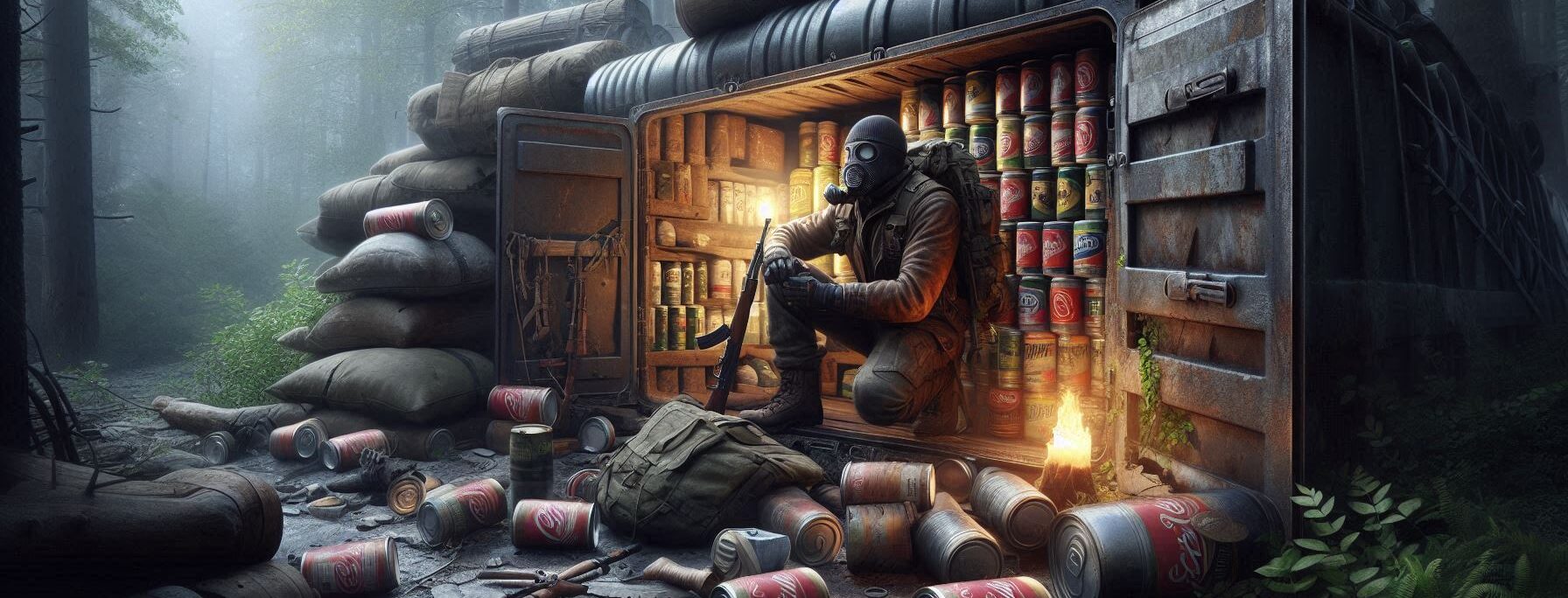
It’s really crucial to have a supply of things when you’re attempting to stay alive. It may truly transform how you feel, like you’re doing well instead of just getting by. I remember a camping trip when we had to keep our food safe from animals who were curious and campers that were devious. What an adventure!
It taught me how important it is to plan ahead. You want to keep your things safe so that nothing goes missing or gets broken.
Using strong containers is one approach to keep your things safe. Think of those neat plastic bins with lids that snap shut. They keep bugs out and help everything stay dry at the same time!
Putting your food high up in trees can help, but make sure it’s not too hard to get to when you’re hungry! A decent backpack is also helpful. Just get one that is comfortable and has a lot of pockets for gear and snacks.
It’s easier to find what you need later if you keep things organized. When a bear is sniffing about, you don’t want to have to sift through a dirty bag!
If you plan ahead, you’ll have more time to enjoy the outdoors without worrying about your supplies. Have fun outside every minute!
Learning What a Survival Cache Is
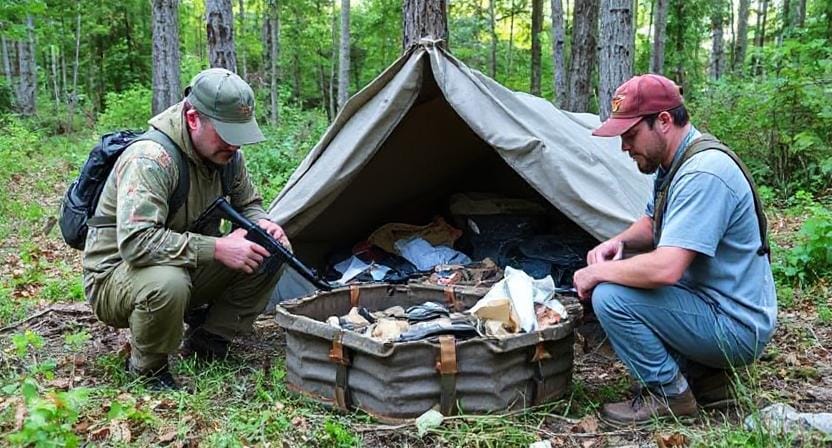
Let’s talk about what a “survival cache” truly is. It’s like your hidden store of food, tools, and other things you could need if things become difficult or if you’re out in the woods for a period. These items can make a big impact if you’re in the wilderness with only a few nibbles.
I learnt about caches from people who have been camping for a long time when I started camping more seriously. They always said how crucial it was to have one. It makes sense to hide your supplies if you plan to stay in one place for a long time. You don’t want them to go bad or be stolen by someone else!
There are so many fascinating areas where you can hide caches! You can find them behind enormous rocks, within hollow trees, or even buried in the earth! Just make sure you can’t see them. You don’t want people to find your stuff too easy.
Think about it: having that little secret stash makes you feel better. When you need it most, you’ll feel better knowing that there is extra food or gear waiting for you. How cool is that?
Picking the Right Place
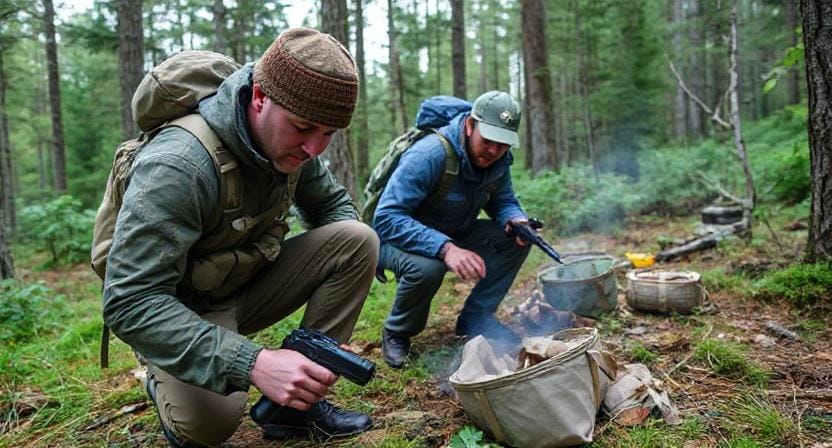
Where you hide your cache really affects how safe it is. You should think about how easy it will be for you to find later and how hard it will be for others to see. A nice spot is one that fits in with nature yet is still easy to recall.
I recall going on a hike through some really deep woods. I selected a place directly next to a big rock that was covered in lush green moss. The rock nearly felt like it was wrapping my things in a warm blanket. People that walked by probably wouldn’t even see my hidden treasures.
You don’t want to position your cache too close to water or busy paths. Those places are like flashing signs that say, “Hey! “Look over here!” Not a good idea if you want to keep your things safe from others that want to see them.
It takes some time to find the proper hiding place, but it’s worth it. Just think of how great it will be to know that your hoard is safe and waiting for you when you need it most!
How to Use Camouflage
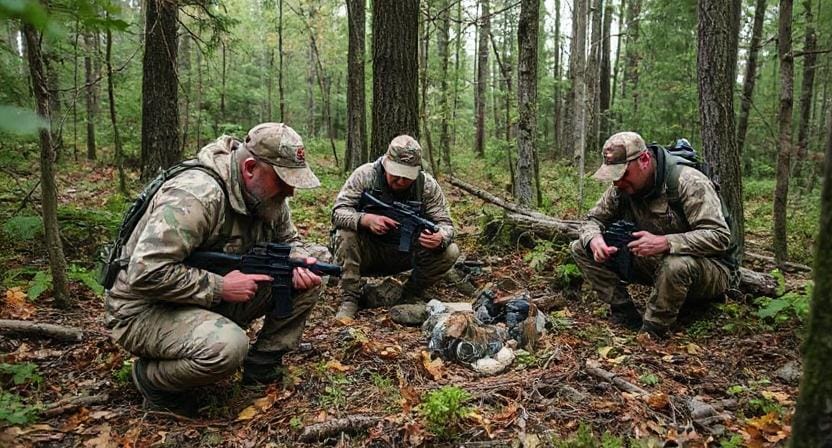
Now that you’ve chosen the best place to hide your cache, let’s talk about how to do it. Using nature to protect your treasure is a great idea. You could want to cover it with leaves or branches. That makes it look like it belongs there.
When we went camping with friends by a lake, we had a great time hiding our bags of supplies under pine needles and fallen branches. It looked so real! People wouldn’t have known that there were jewels concealed behind all that green stuff.
Putting some rocks about can also help a lot. Not only do they assist hide things better, but they also keep everything in place. You don’t want your neatly hidden treasures to move around when you get back!
Just think about how good it would feel to know that your supplies are safe and sound while you enjoy the great outdoors. It feels good to be ready!
Protecting Against Animals
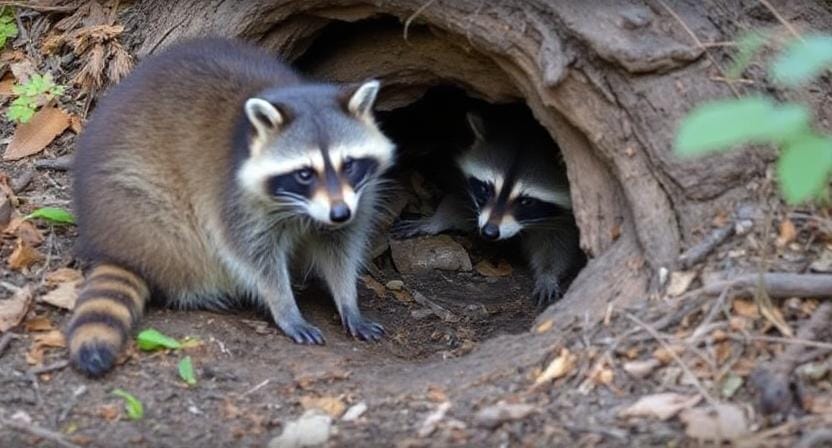
We all love the lovely small animals that live in nature, don’t we? But keeping our food secure from them is a completely different story! Raccoons and squirrels are small robbers who are quite sly. They can find food faster than you can say “snack time.”
One thing I’ve learnt is to put my food in airtight containers in the cache. These boxes are awesome! They keep smells inside, so those furry thieves can’t smell what’s cooking. Also, they stack up well. You can fit more in your stash without it getting dirty.
Hanging things high up in tree branches is another sensible thing to do. It keeps them safe from those four-legged visitors who want to eat them. Think about a raccoon attempting to get up there—good luck with that!
These steps make me feel better about being outside because I know my snacks are safe. Nature is beautiful, yet it may be hard at times!
Setting Up Alarms and Alerts
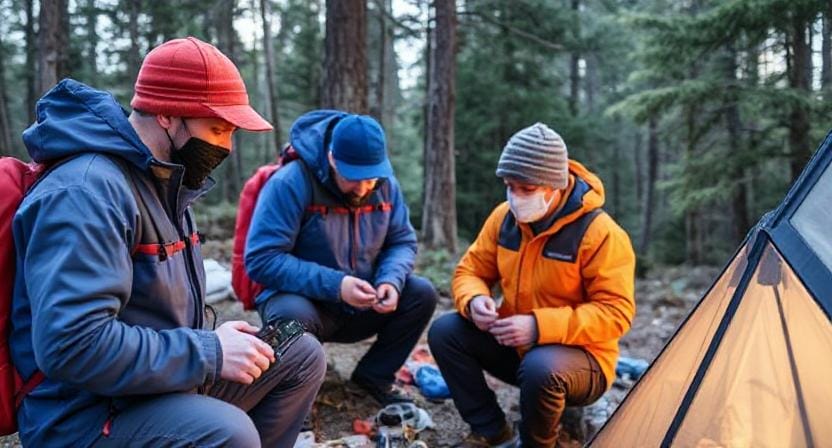
Setting up simple alarm systems might be help if you’re worried about someone finding your secret cache or an animal sneaking in and stealing it. You don’t need any fancy tools for this. Sometimes, simply a few traps that make noise work.
I remember one camping trip when I got a bit inventive. I filled some empty tin cans with rocks. After that, I tied them with string around where I hid them. Those cans would make a lot of noise if anyone or anything got too close. It was like having my own alarm system.
This strategy is great since it does two things at once. It keeps bugs away and lets me know if something is going on close. This way, I have time to act before anything bad happens!
It’s nice to know that I have a little extra safety while I’m out in nature. It just makes camping even more enjoyable and safe!
Regularly Checking Your Cache
After you’ve set everything up nice and secure, don’t forget to check on it regularly! Just like checking your gear before a trip, keeping an eye on what’s stored is super important. You want to make sure nothing goes bad or gets damaged over time.
I remember one trip where I was gone for a few weeks. When I came back, I found some supplies had spoiled because there wasn’t enough air getting in the container. Yikes! That was a big lesson for me. Now, I make it a point to revisit my caches every month—or at least every season. Just a quick peek is all it takes.
It feels good knowing that everything is still intact and usable when you need it most. Plus, it’s kind of fun to see what nature has done around your stash while you were away! Keeps things interesting, right?
Conclusion: Stay Vigilant Yet Prepared
It can be easy to keep your survival stash safe. You just need to think hard about where to put it and how to disguise it well. It’s like playing hide-and-seek with your things! You want them to look like they belong in nature so that animals and people can’t see them.
Finding the appropriate place is really important. discover areas that are a little concealed but that you can discover again later. It could be behind a big tree or under some shrubs. It also helps to use items that are already there, like leaves and branches, to cover everything up well.
You also have to stay on your toes. Watch for any signs of animals sniffing around or humans walking past. You never know when a cunning raccoon might think your cache looks good!
You can relax knowing you’ve done things to protect your supplies. A little thought goes a long way, and before you know it, you’ll be an expert at this outdoor adventure thing!
Suggested External Resources:
Survival Cache
https://www.survivalcache.com
Outdoor Life – How to Hide a Cache
https://www.outdoorlife.com/how-hide-cache/
The Ultimate Guide to Food Storage in The Wild
https://www.wildfoodadventures.com/food-storage-guide




